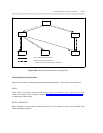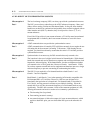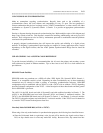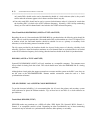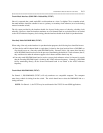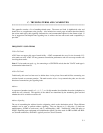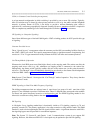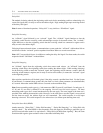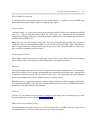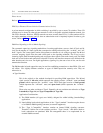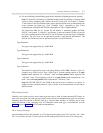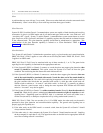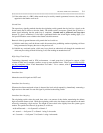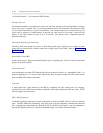TRUNKING TERMS AND CAPABILITIES C-3
_ ______________________________________________________________________________________
_ ______________________________________________________________________________________
_ ______________________________________________________________________________________
CCSA (or Common Control Switching Arrangement)
A private network configuration in which switching is provided by one or more CO switches. Typically,
these CO switches may be shared by other private networks as well as by the public switched telephone
network. A primary feature of CCSA, is the ability to provide a uniform numbering plan, which is
applicable for a customers geographically dispersed locations. However, attendant assistance is required in
order to complete any tandem-type calls routed through the CO. Refer to EPSCS for a contrast.
CX Signaling (or Composite Signaling)
One of three different types of derived E&M signals. AT&T switching products do NOT provide this type
of signaling.
Customer Provided Access
Those ‘‘Special Access’’ arrangements where the customer provides DS1 rate trunking facilities directly to
the AT&T 4 ESS toll switch. This special arrangement requires a significant amount of engineering, and
consists of a T1 or T1-type transmission facility between the AT&T toll office and customer premises.
Cut-Through Mode of Operation
Whenever the local PBX passes user-dialed digits directly to the outgoing trunk. The station user dials the
outgoing trunk access code (e.g., #9), whereupon an outgoing trunk is connected to the station line.
Subsequently, the distant switch (typically) returns dial tone to the station user. At this point the trunk is
said to be ‘‘Cut-Through’’ since all additionally dialed digits pass directly to the distant switch independent
of the local PBX. Refer to ‘‘Senderized Mode of Operation’’ for a contrast.
Note: System 75 and Generic 1 do not provide ‘‘Cut-Through’’ mode of operation. They always function
in ‘‘Senderized’’ mode.
DTMF Signaling (or Dual-Tone Multi Frequency Signaling)
The dialing arrangement where two selected tones (1 tone from a low group of 4 and 1 tone from a high
group of 3) are combined to produce 12 different tones. These 12 different tones correspond to the numbers
(or letters) and special characters located on a touch-tone key pad. The DTMF Signaling method is also
referred to as touch-tone calling. Refer to the term ‘‘Addressing.’’
DX Signaling
A full-duplex 2-way signaling method that is functionally similar to CX signaling, superior to CX, and
generally succeeds CX. The primary application is for range extension on long metallic trunks. The E&M
interface is used to derive/superimpose the DX signals from the trunk. A significant detraction with DX is
that signaling bypass must be provided for conventional repeaters.
Note: The System 75, System 85, and Generic 1 and 2 communications system do not support DX
signaling. However, the DIMENSION PBX LC11 circuit pack may be optioned to provide DX signaling.



